At their core SmartLists are rows and columns of
data, similar to an Excel spreadsheet. They provide a powerful, friendly
way to interact with information in Dynamics GP. One of the simplest
SmartList features found by most users is the ability to sort a
SmartList simply by clicking on a column header. However, SmartLists
provide advanced sorting features that are even more powerful, just a
little harder to find.
In this recipe we'll take a look at all of the sorting options for SmartLists, simple and advanced.
How to do it...
To sort a SmartList:
1. Click on the SmartList button (shown in the following screenshot) on the menu bar at the top or select Microsoft Dynamics GP from the top and click on SmartList:

If the SmartList icon is not shown at the top, right-click on the blue bar next to the menu and select the Standard toolbar to turn it on.
2. Select Financial in the left pane and then Account Summary below it:
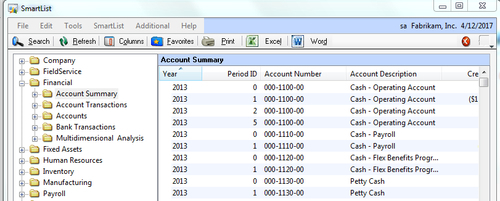
3. Simple sorting is accomplished by clicking on the column name. Select the Debit Amount column title to sort by debits. The arrow next to the column name shows whether the sort is ascending or descending:
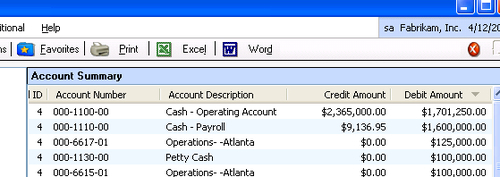
4. Click on Debit Amount again to change the sort order.
5. For more advanced sorting select Search from the SmartList Toolbar and click on Order By. This window allows sorting by multiple fields; including fields that are included but not displayed on the SmartList:
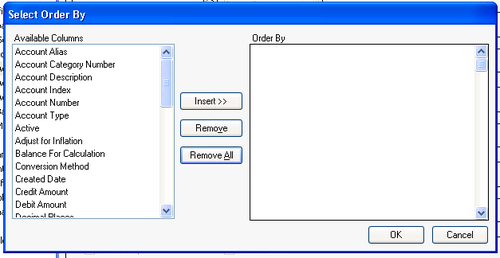
6. Select Year and click on Insert. Set Order By to Descending.
7. Select Period ID and click on Insert. Set Order By to Ascending:
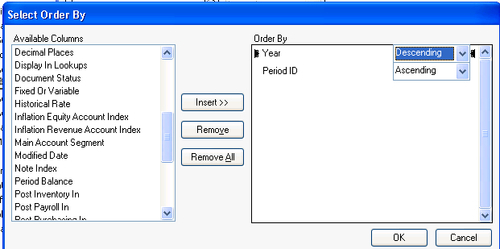
8. Select Account Number and click on Insert. Set Order By to Ascending.
9. Select Debit Amount and click on Insert. Set Order By to Descending:
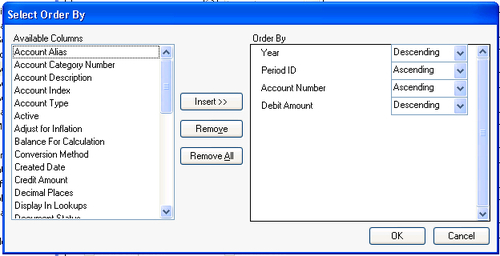
10. Click on OK twice to return to the SmartList.
11. Notice that the SmartList has now been sorted by Year, Period ID, Account Number, and Debit Amount following the sorting rules set up in this example:

How it works...
Complex sorting in a
SmartList can often bring clarity to information by providing a better
arrangement of data. Frequently, users who don't know about this feature
take the extra step of exporting the data to Microsoft Excel and then
sorting it there. With advanced sorting this step is unnecessary and it
can eliminate the potentially time-consuming effort of sending a large
amount of data to Excel just for sorting.
Additionally, even when
the SmartList is selected with the intention of sending it to Excel,
pre-sorting the information can speed up the analysis once the data is
exported to a spreadsheet.